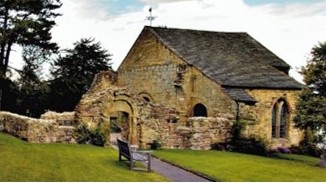All of our lectures are live streamed and are open to anyone to join us online, Fellows and Non-Fellows.
To view any of our past lectures please visit our YouTube channel.
To view any of our past lectures please visit our YouTube channel.

One aspect of the English Reformation (1533-53) was a dramatic change of doctrine from Roman Catholic to the Protestant, which involved an attack on ‘traditional religion’, statues were forbidden, the celebration of Mass was banned and finally, all the redundant liturgical goods and vestments were confiscated by the Crown. To what degree were these changes of doctrine welcomed or opposed by the clergy and general population? One overlooked source of information is the evidence for the deliberate concealment of banned goods including censers, crucifixions, saints’ relics and statues. Often these objects were concealed within or adjoining the churches where they had probably been used, but sometimes material was concealed further afield. We only know of this practice due to a handful of historical references and the accidental rediscovery of this material centuries later often during church restoration. Objects were buried under church floors, outside in burial grounds, or walled up inside internal cavities like redundant niches for statues. I started to research this topic some years ago and quickly realised that the concealment of religious objects during the Reformation was an overlooked phenomenon.

Abberley old church in Worcestershire
The late Margaret Aston in Broken Idols of the English Reformation (2016, p.219) wrote that: ‘the archaeology of concealment [during the Reformation] is a subject that awaits proper investigation’. Often examples of the concealment of objects has not been recognised or properly documented. What interests me is the motivation of those involved, they were disobeying the Crown and risked punishment. Were they pious individuals who that hoped if doctrine changed (as it did the Marian Catholic revival of 1553-58, then this material could be retrieved and reused – this did happen) or were they simply protesting against the theft of their parish’s property by the avaricious, but cash-strapped Crown? Remember these people had recently witnessed the state-sponsored looting of the monasteries and the chantries, so in 1552 when the Crown ordered the compilation of a second inventory of English parish church goods, there was good reason to be concerned.
A short article on this subject entitled: ‘How a passion for toppling statues was subverted’ was published by the author in British Archaeol (no 177, p.10-11) in 2021.
This event will be both in person at Burlington House and online. Please select the appropriate ticket below.
If you have any questions please contact us on [email protected]